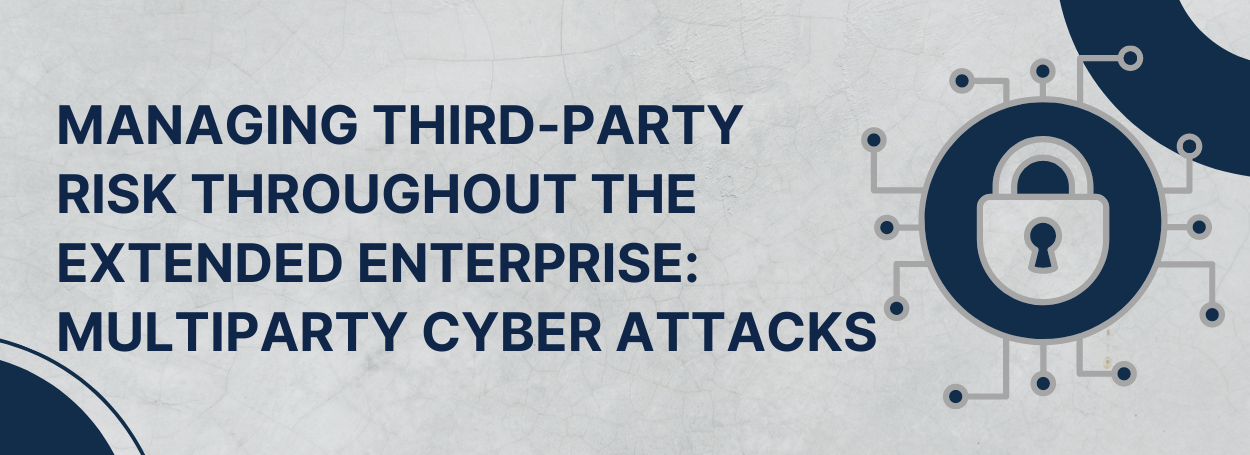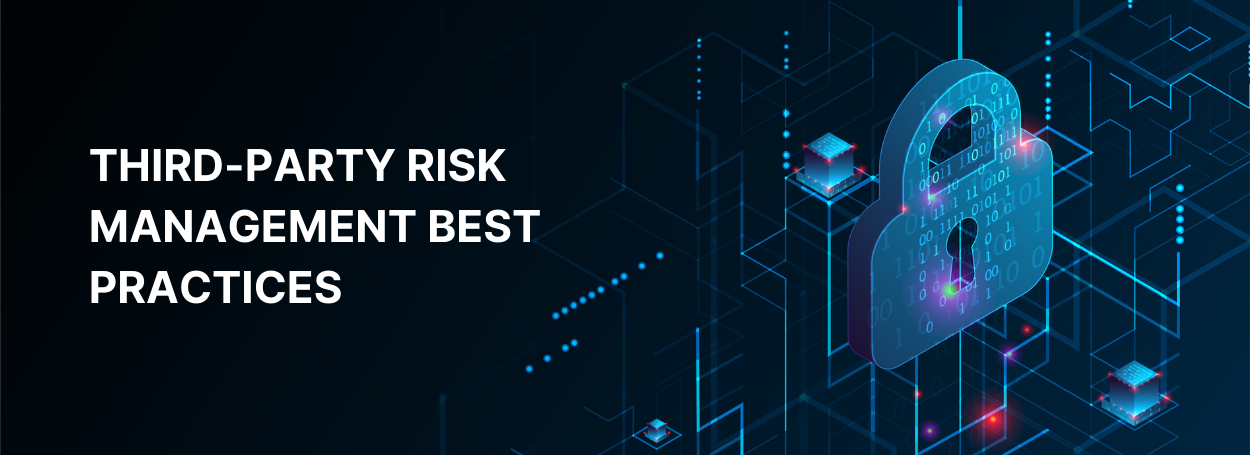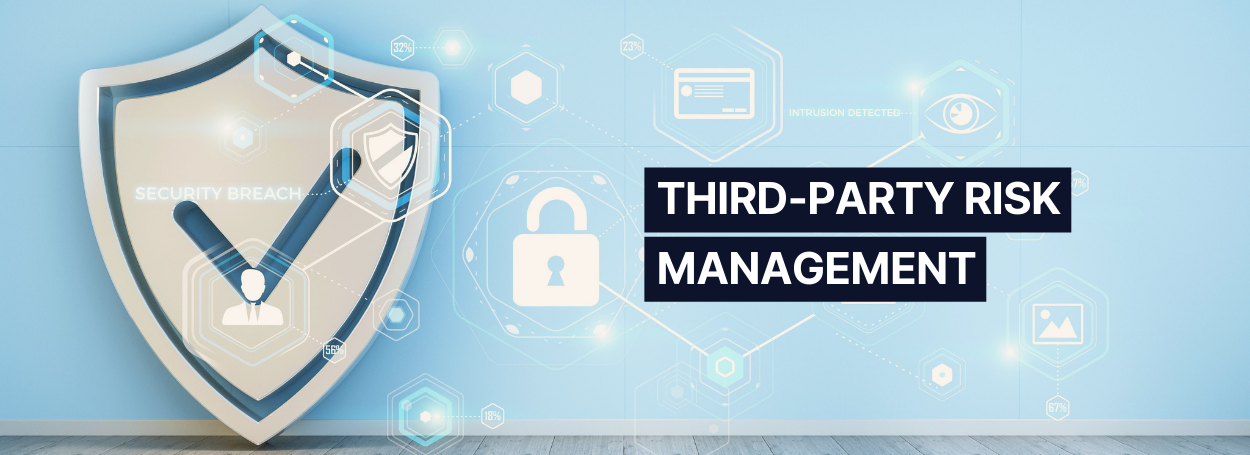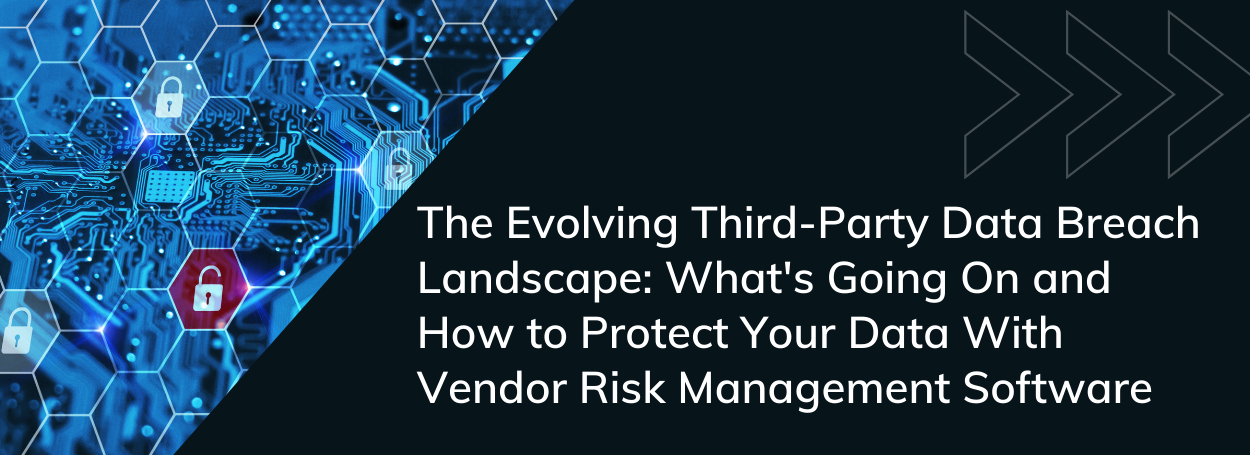Managing Third-Party Risk Throughout The Extended Enterprise: Multiparty Cyber Attacks

Third-party cybersecurity risk is a major concern for large companies and governments as well as small and medium enterprises today. The damages from multi-party cyber attacks are escalating with time as enterprises extend to include more third parties in their supply chain ecosystems to remain competitive and profitable.
Managing the risks throughout an extended enterprise needs to be done carefully, considering how interconnected networks can lead to data breaches.
Take the cases of the SolarWinds attack and the Kaseya ransomware incident that made global headlines. These incidents zeroed in on how multi-party cyber attacks can leave disastrous effects on extended enterprises.
In both cases, the malicious actors exploited vendor security loopholes and weak credentials to execute their designs. And after successfully invading the extended enterprises’ networks, they expanded the scope of attack to target all sorts of businesses and government agencies connected to the supply chain ecosystem. The attackers stole precious data and caused many companies to temporarily shut down and bear millions of dollars in losses.
Researchers and data scientists at the Cyentia Institute sliced and diced 50 of the most significant multi-party cyber attacks in recent years. The findings showed that the average number of organizations severely impacted by these incidents stood at 31. But what stunned the researchers was that up to 800 organizations ended up being the secondary victims in these breaches.
The Cyentia Institute report highlights how third-party damages escalate when hackers target organizations with downstream stakeholders and clients. It also underscores the importance of having next-generation solutions in place to manage third-party risk throughout the extended enterprise.
Losses From Multiparty Cyber Attacks
The researchers at Cyentia Institute determined the average cost of attacks involving multiple organizations to be $90 million. That’s huge compared with the average cost of the traditional cybersecurity attacks, which stands at $200,000.
While the difference in monetary losses is significant, the findings point to the fact that most organizations focus on managing their own risks, so much so that they forget about the combined risks that we all face in an excessively connected corporate world.
Cyentia Institute conducted its study based on inputs from cyber loss data of cyber insurance company Advisen Ltd. The authors said the insurer’s data repository has reliable information on up to 100,000 cyber breaches. Cyentia then used its own criteria like monetary damages, the number of affected organizations, and the number of data records breached to pick up and study the biggest cyber attacks.
System Intrusions and Ransomware - the Major Causes of Third-Party Attacks
The researchers said that system intrusion was the leading trend seen in most of the attacks. The hackers used malware, compromised system privileges, and exploited flaws in virtual data access to intrude organizational IT systems. These incidents affected 57% of downstream organizations in the top 50 major extended enterprise attacks.
While ransomware came second at 44%, it caused severe monetary damages. Plus, when we consider the secondary organizations affected by the attacks, ransomware takes center stage in the largest multi-party cyber incidents.
Third-Party Vendors Are a Major Target
Third-party vendors are the prime target of hackers. Supply chain attacks resulted in $7.5 billion and affected the highest number of organizations in the extended enterprises. Based on the findings, it is crucial to have foolproof cybersecurity for your organizations as well as your supply chain members.
While the downstream organizations were not the direct victims in most cases, they do face the ramifications as holders of the breached data. The original data owners face immense pressure since they must remediate the flaws or control the damages. Therefore, businesses need to practice prudence when selecting and onboarding supply chain members in a multi-party enterprise environment.
There has also been a rise in incidents whereby bad actors exploit downstream organizations’ shared system or network vulnerabilities. Plus, many organizations use a centralized system or application, which means the effects of a breach will expand to the member organizations.
Third-party access control and a modern, robust supply chain risk management solution can help prevent such incidents in the first place. And even if a breach happens, a reliable TPRM software will help you take quick remediation measures to contain the damages.
Protect Your Extended Enterprise Against Multi-Party Supply Chain Attacks
Malicious actors are out looking for lucrative targets. Their prime targets are extended enterprises with sophisticated supply chains since they are more likely to have security loopholes and look more profitable to the hackers. Complex vendor relationships present multiple points of targets and a large attack surface to hackers.
So, how do you ensure your business is secure in the face of a complex and evolving threat landscape? The traditional third-party risk management practices and methods will no longer protect your organization against the complex risks. It is time to modernize your TPRM framework, so your enterprise is always ready to cope with even the most sophisticated supply chain attacks.
Your business needs a modern and robust solution based on new technologies and automation to gain 360-degree visibility into the risks that your vendors present your organization with. Advanced TPRM software makes the risk management and due diligence process super easy and accurate throughout the extended enterprise.
CENTRL’s Vendor360 is a user-friendly software that allows you to manage your vendors and the risks they present from a single dashboard. Using our software, you can securely choose and onboard your vendors, automate the risk assessment, audit, and monitoring process, get real-time visibility into new threats, and track issues to remediation.
The easy-to-use workflows, automation, and centralized directory boost efficiency by more than 50 percent. Plus, you get enhanced risk insights with actionable intelligence. The best part is that the pre-built connector, templates, and cloud-based open API architecture allow rapid deployment.
Check out everything you want to know about Vendor360. Or schedule a LIVE DEMO.
Contact us for more information.


